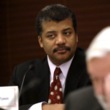A Briefer History of Time: The Science Classic Made More Accessible
(Libby/OverDrive eBook, Kindle)
Available Platforms
Description
FROM ONE OF THE MOST BRILLIANT MINDS OF OUR TIME COMES A BOOK THAT CLARIFIES HIS MOST IMPORTANT IDEAS Stephen Hawking’s worldwide bestseller A Brief History of Time remains a landmark volume in scientific writing. But for readers who have asked for a more accessible formulation of its key concepts—the nature of space and time, the role of God in creation, and the history and future of the universe—A Briefer History of Time is Professor Hawking’s response. Although “briefer,” this book is much more than a mere explanation of Hawking’s earlier work. A Briefer History of Time both clarifies and expands on the great subjects of the original, and records the latest developments in the field—from string theory to the search for a unified theory of all the forces of physics. Thirty-seven full-color illustrations enhance the text and make A Briefer History of Time an exhilarating and must-have addition in its own right to the great literature of science and ideas.
Excerpt
Similar Titles From NoveList
Similar Authors From NoveList
Published Reviews
Booklist Review
Theoretical physicist Hawking became an international celebrity thanks to his cosmological primer Brief History of Time (1988), one of the twentieth century's biggest best-sellers. According to Hawking, one copy of Brief History has been sold for every 750 people on earth (move over, Scarlett O'Hara!). While Brief History amassed that sales record, however, its subject matter didn't stand still, and some kind of overhaul, Hawking and Mlodinow say, came to seem necessary. They chose to revise in the direction of lesser length, more illustration, and greater accessibility as they updated to incorporate developments in string theory, new indications that a unified theory of physics--one that comprehends gravity as well as the three other physical forces--is possible, and new observations made by the Hubble Space Telescope and the Cosmic Background Explorer satellite. Few will be sorry for their choice, for Briefer History may be the clearest introduction to physics ever, and not just because it eschews equations, though that helps. Its clarity arises from firmly adhering to the concept announced by the second chapter's title, Our Evolving Picture of the Universe. The book is the developmental portrait--a biography, if you will--of the idea of a dynamic cosmos, which took long to catch on: even Einstein, whose relativity theories broke the idea as nothing before had done, clung to a cosmological constant (which, Hawking and Mlodinow show, yet has its uses) in the face of quantum mechanical indeterminacy. Like the best biographies, it's an utterly engrossing read. --Ray Olson Copyright 2005 Booklist
Publisher's Weekly Review
In the 17 years since the publication of A Brief History of Time, Dr. Hawking's bestselling exposition of physics, new data from particle physics and observational astronomy have shed light on efforts to find a Grand Unified Theory of Everything that Hawking and Mlodinow use to enhance and update their answers to basic questions about the universe: where it's going and how it began. Discussed at length are the mysterious dark matter and dark energy-both of which can only be observed by their gravitational effects and are believed to make up 90 percent of the universe. Another area of research that has exploded in the past 20 years is string theory. Hawking and Mlodinow provide one of the most lucid discussions of this complex topic ever written for a general audience. Readers will come away with an excellent understanding of the apparent contradictions and conundrums at the forefront of contemporary physics. Recognizing that much of their audience will also be science fiction buffs, they include a chapter on the possibility of time travel. "Don't bet on it," the authors advise. Throughout these discussions, the authors maintain the same wry, lively tone that made the original Brief History such a delight. They close with a discussion of where physics ends and philosophy begins, "Why does the universe exist at all?" They cannot provide the answer, but they do provide an immense amount of food for thought. Highly recommended. (Sept.) Copyright 2005 Reed Business Information.
Library Journal Review
True, Hawking here aims to provide a less technically complex version of his famed A Brief History of Time. But he's also updated the content to reflect the very latest research. (c) Copyright 2010. Library Journals LLC, a wholly owned subsidiary of Media Source, Inc. No redistribution permitted.
Booklist Reviews
Theoretical physicist Hawking became an international celebrity thanks to his cosmological primer Brief History of Time (1988), one of the twentieth century's biggest best-sellers. According to Hawking, one copy of Brief History has been sold for every 750 people on earth (move over, Scarlett O'Hara!). While Brief History amassed that sales record, however, its subject matter didn't stand still, and some kind of overhaul, Hawking and Mlodinow say, came to seem necessary. They chose to revise in the direction of lesser length, more illustration, and greater accessibility as they updated to incorporate developments in string theory, new indications that a unified theory of physics--one that comprehends gravity as well as the three other physical forces--is possible, and new observations made by the Hubble Space Telescope and the Cosmic Background Explorer satellite. Few will be sorry for their choice, for Briefer History may be the clearest introduction to physics ever, and not just because it eschews equations, though that helps. Its clarity arises from firmly adhering to the concept announced by the second chapter's title, "Our Evolving Picture of the Universe." The book is the developmental portrait--a biography, if you will--of the idea of a dynamic cosmos, which took long to catch on: even Einstein, whose relativity theories "broke" the idea as nothing before had done, clung to a cosmological constant (which, Hawking and Mlodinow show, yet has its uses) in the face of quantum mechanical indeterminacy. Like the best biographies, it's an utterly engrossing read. ((Reviewed July 2005)) Copyright 2005 Booklist Reviews.
Library Journal Reviews
True, Hawking here aims to provide a less technically complex version of his famed A Brief History of Time. But he's also updated the content to reflect the very latest research. Copyright 2005 Reed Business Information.
PW Annex Reviews
In the 17 years since the publication of A Brief History of Time, Dr. Hawking's bestselling exposition of physics, new data from particle physics and observational astronomy have shed light on efforts to find a Grand Unified Theory of Everything that Hawking and Mlodinow use to enhance and update their answers to basic questions about the universe: where it's going and how it began. Discussed at length are the mysterious dark matter and dark energy-both of which can only be observed by their gravitational effects and are believed to make up 90 percent of the universe. Another area of research that has exploded in the past 20 years is string theory. Hawking and Mlodinow provide one of the most lucid discussions of this complex topic ever written for a general audience. Readers will come away with an excellent understanding of the apparent contradictions and conundrums at the forefront of contemporary physics. Recognizing that much of their audience will also be science fiction buffs, they include a chapter on the possibility of time travel. "Don't bet on it," the authors advise. Throughout these discussions, the authors maintain the same wry, lively tone that made the original Brief History such a delight. They close with a discussion of where physics ends and philosophy begins, "Why does the universe exist at all?" They cannot provide the answer, but they do provide an immense amount of food for thought. Highly recommended. (Sept.) Copyright 2005 Reed Business Information.
Reviews from GoodReads
Citations
Hawking, S., & Mlodinow, L. (2007). A Briefer History of Time: The Science Classic Made More Accessible . Random House Publishing Group.
Chicago / Turabian - Author Date Citation, 17th Edition (style guide)Hawking, Stephen and Leonard Mlodinow. 2007. A Briefer History of Time: The Science Classic Made More Accessible. Random House Publishing Group.
Chicago / Turabian - Humanities (Notes and Bibliography) Citation, 17th Edition (style guide)Hawking, Stephen and Leonard Mlodinow. A Briefer History of Time: The Science Classic Made More Accessible Random House Publishing Group, 2007.
Harvard Citation (style guide)Hawking, S. and Mlodinow, L. (2007). A briefer history of time: the science classic made more accessible. Random House Publishing Group.
MLA Citation, 9th Edition (style guide)Hawking, Stephen, and Leonard Mlodinow. A Briefer History of Time: The Science Classic Made More Accessible Random House Publishing Group, 2007.
Copy Details
| Collection | Owned | Available | Number of Holds |
|---|---|---|---|
| Libby | 1 | 1 | 0 |































